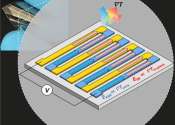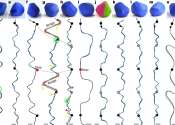Scientists develop magnetically controlled soft medical robot inspired by the pangolin
Pangolins are fascinating creatures. This animal looks like a walking pine cone, as it is the only mammal completely covered with hard scales. The scales are made of keratin, just like our hair and nails. The scales overlap ...
Jun 20, 2023
0
344









